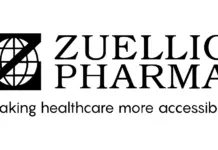Digital Validation and Compliance: The Next Step in Pharma Regulation
The pharmaceutical industry stands at a technological crossroads where decades-old validation practices meet transformative digital capabilities. Traditional paper-based validation approaches, while historically reliable, increasingly struggle to keep pace with the complexity, speed, and data intensity of modern pharmaceutical operations. Digital validation emerges as the evolutionary response, leveraging electronic systems, automation, and advanced analytics to transform how pharmaceutical companies demonstrate and maintain compliance with regulatory quality standards. This transformation extends beyond mere digitization of existing paperwork to fundamentally reimagine validation as a dynamic, data-driven process that enhances both regulatory compliance and operational efficiency.
The regulatory imperative driving digital validation adoption continues intensifying as pharmaceutical manufacturing becomes more sophisticated. Complex biologics, personalized medicines, and advanced manufacturing technologies generate unprecedented volumes of quality data requiring rigorous validation. Simultaneously, regulatory agencies worldwide demand more comprehensive documentation, faster response to quality issues, and demonstrated process understanding extending beyond basic compliance checkboxes. Traditional validation approaches, dependent on manual documentation and retrospective review, cannot sustainably meet these escalating requirements. Digital validation offers the only viable path forward, providing automated data capture, real-time monitoring, and intelligent analytics that satisfy regulatory expectations while supporting continuous improvement.
Understanding Digital Validation Technologies
Digital validation encompasses a comprehensive suite of technologies working in concert to replace paper-based validation processes with electronic workflows. At the foundation lie electronic validation management systems that digitize the entire validation lifecycle from planning through execution, review, and ongoing maintenance. These platforms replace physical filing cabinets with cloud-based repositories, manual routing of approval signatures with automated electronic workflows, and handwritten test execution records with structured data entry fields that enforce completeness and accuracy. The resulting electronic records provide superior searchability, accessibility, and auditability compared to paper predecessors while dramatically reducing storage costs and retrieval times.
Electronic signatures represent a critical enabling technology, providing legally binding approvals within digital workflows. Regulatory frameworks including FDA’s 21 CFR Part 11 and EU Annex 11 establish rigorous requirements for electronic signatures, ensuring they provide equivalent or superior security compared to handwritten signatures. Modern electronic signature systems employ multi-factor authentication, biometric verification, and comprehensive audit trails documenting who signed what document when and why. These security measures actually exceed the traceability possible with ink signatures on paper, providing regulators greater confidence in document authenticity while enabling faster approval cycles.
Workflow automation transforms validation from a linear sequence of manual steps into an orchestrated process where systems automatically route documents, trigger notifications, enforce approval hierarchies, and track progress against established timelines. Intelligent workflow engines recognize dependencies between validation activities, automatically sequencing tasks and preventing premature progression when prerequisite steps remain incomplete. This orchestration ensures consistency across validation projects while reducing the coordination burden on validation managers who previously spent substantial time manually tracking activities and chasing approvals.
Data integrity assurance represents perhaps the most significant regulatory benefit of digital validation. Electronic systems implement controls that prevent data manipulation, maintain complete audit trails of all changes, and enforce sequential time-stamping that proves contemporaneous record creation. These controls address regulatory concerns about data falsification that paper systems cannot fully prevent. Automated validation of data entry, electronic cross-checks between related records, and algorithmic detection of suspicious patterns provide layers of data quality assurance impossible with manual processes. Regulators increasingly recognize digital validation as superior to paper approaches specifically for data integrity considerations.
Implementing Paperless Quality Management Systems
The transition from paper-based to digital validation represents a significant organizational undertaking requiring careful planning, substantial investment, and effective change management. Successful implementations typically follow phased approaches, beginning with less complex validation activities before tackling intricate qualification projects or legacy system validation. Early pilot projects build organizational capability while demonstrating value that justifies continued investment. These pilots also identify system configuration needs, training requirements, and procedural changes necessary for successful enterprise-wide deployment.
System validation for the digital validation platform itself represents an essential but sometimes underappreciated requirement. Electronic systems used for pharmaceutical validation must themselves be validated, demonstrating that they reliably perform intended functions without introducing errors. This meta-validation follows established Computer System Validation principles, documenting requirements, testing functionality, and maintaining validated state through controlled change management. Some organizations initially struggle with this requirement, creating seemingly circular validation challenges. However, established methodologies and increasing regulatory comfort with risk-based validation approaches simplify this process.
Training programs must address both technical system operation and conceptual shifts in how validation activities are conducted. Personnel accustomed to paper-based validation may initially resist electronic workflows, particularly if digital literacy varies across the organization. Effective training programs emphasize benefits to users themselves, such as reduced administrative burden and easier record retrieval, rather than focusing solely on compliance advantages. Hands-on practice in realistic scenarios builds confidence while identifying system usability issues requiring configuration adjustments. Ongoing support resources including help desks, user guides, and advanced training for power users ensure sustained successful adoption.
Integration with existing quality and manufacturing systems amplifies digital validation benefits while creating technical challenges. Ideally, electronic validation systems connect with manufacturing execution systems, laboratory information management systems, and quality management systems, enabling seamless data flow and eliminating redundant data entry. This integration supports holistic quality management where validation, deviation management, change control, and continuous improvement form an interconnected ecosystem. However, achieving this integration requires careful attention to data standards, system interfaces, and information security, potentially involving substantial IT resources and vendor coordination.
Regulatory Compliance and Modern GMP Alignment
Regulatory frameworks governing pharmaceutical validation have evolved to explicitly accommodate and encourage digital approaches. FDA guidance documents on process validation and Computer System Validation acknowledge electronic record keeping, automated testing, and digital approval workflows as acceptable practices when properly implemented and controlled. The agency’s emphasis on risk-based validation aligns naturally with digital validation capabilities that enable more sophisticated risk assessment through data analytics. European Medicines Agency guidance similarly recognizes digital validation, with Annex 11 providing detailed requirements for computerized systems used in GMP environments.
Risk-based validation approaches, increasingly emphasized by regulatory authorities, benefit enormously from digital validation capabilities. Traditional validation often applied uniform rigor across all systems regardless of patient safety impact or business criticality, resulting in resource-intensive validation of low-risk systems while higher-risk areas received insufficient attention. Modern risk assessment methodologies, formalized in approaches like Computer Software Assurance, enable tailored validation depth based on rigorous risk analysis. Digital validation systems facilitate these risk-based approaches through structured risk assessment workflows, automated risk scoring algorithms, and dashboards highlighting validation resources allocation across the risk spectrum.
Continuous process verification represents an emerging validation paradigm particularly enabled by digital technologies. Rather than conducting discrete validation studies separated by lengthy intervals, continuous verification employs ongoing data collection and statistical analysis to confirm processes remain in a state of control. This approach aligns with modern manufacturing practices including continuous manufacturing and real-time release testing. Digital validation systems automatically collect process data, perform statistical analyses detecting trends toward process drift, and trigger investigations when predefined action limits are exceeded. This shift from periodic validation to continuous monitoring provides superior process assurance while reducing the burden of traditional revalidation studies.
Regulatory inspection readiness improves dramatically with digital validation, as electronic systems provide instant access to complete validation documentation organized in logical hierarchies. Inspectors can rapidly locate specific documents, trace relationships between validation activities, and verify approval signatures with far greater efficiency than possible with paper archives. Automated compliance dashboards summarize validation status across entire sites, providing inspectors immediate overview of GMP compliance state. Some electronic validation systems generate pre-formatted inspection packages, compiling all validation evidence for specific systems or areas in response to routine information requests. This responsiveness creates positive impressions during regulatory inspections while reducing preparation time.
Advanced Analytics and Continuous Improvement
Digital validation generates rich datasets that enable sophisticated analytics impossible with paper records. Validation cycle time analysis identifies bottlenecks in validation workflows, quantifying time spent in different stages and highlighting opportunities for process improvement. Project managers can track validation resource utilization, forecast capacity requirements, and optimize personnel assignments based on historical completion rates and upcoming workload. These analytical capabilities transform validation management from reactive fire-fighting to proactive capacity planning.
Trend analysis across multiple validation projects reveals patterns that inform validation strategy. Recurring deviations or failed tests during qualification suggest training needs or procedural gaps requiring corrective action. Systems or processes requiring frequent revalidation signal fundamental design issues warranting more substantial intervention. Aggregated validation data enables benchmarking between facilities or product lines, identifying best practices that can be standardized across organizations. These insights, derived from comprehensive digital records, drive continuous improvement that gradually reduces validation burden while enhancing quality assurance.
Predictive maintenance enabled by validation data represents an emerging application with significant potential. Equipment qualification generates detailed performance baselines during installation and operational qualification. Ongoing monitoring of equipment parameters, automatically captured by digital systems, can detect gradual drift from these baselines that may indicate developing maintenance needs. Proactive maintenance based on these early warnings prevents equipment failures that would trigger extensive revalidation, reducing downtime and compliance risks. While still evolving, this predictive approach exemplifies how digital validation creates value beyond basic regulatory compliance.
Integration of validation data with manufacturing quality metrics enables holistic process understanding that transcends traditional organizational silos. Correlating equipment qualification parameters with product quality attributes reveals relationships between process conditions and outcomes, supporting science-based process optimization. Linking validation status with deviation and CAPA rates identifies systems requiring additional validation attention or design modifications. This systems thinking, facilitated by connected digital platforms, elevates pharmaceutical quality management from discrete compliance activities to integrated strategic capabilities.
Economic Benefits and Return on Investment
Pharmaceutical companies implementing digital validation consistently report substantial return on investment, although quantifying benefits requires considering both tangible cost reductions and less easily measured improvements. Direct cost savings include reduced paper consumption, elimination of physical storage space rental, and decreased time spent locating archived documents. While individually modest, these savings compound across large organizations with extensive validation requirements. Some companies report reducing validation cycle times by 30 to 50 percent through workflow automation and parallel review capabilities, enabling faster product launches that generate revenue months earlier than under paper-based approaches.
Personnel productivity improvements represent the largest economic benefit for most organizations. Validation professionals spend dramatically less time on administrative tasks like document formatting, routing physical papers for signature, photocopying records, and filing completed validation packages. This time reallocation enables them to focus on substantive validation activities including risk assessment, test execution, and technical writing that directly advance project completion. Organizations typically report productivity improvements of 40 to 60 percent in validation-related administrative work following digital implementation.
Quality improvements, while challenging to monetize precisely, generate substantial value through reduced compliance risks and avoidance of regulatory findings. Digital validation’s enhanced data integrity controls prevent the kinds of data manipulation that trigger FDA warning letters and consent decrees. Comprehensive audit trails satisfy regulatory inspectors while enabling rapid response to questions, reducing inspection duration and finding severity. Some companies explicitly cite improved inspection outcomes as among the most valuable digital validation benefits, as avoiding major regulatory findings protects revenue streams and corporate reputation.
The future of pharmaceutical validation incontrovertibly lies in digital technologies that enable more rigorous compliance with lower resource burden. As regulatory expectations continue evolving toward more comprehensive process understanding and real-time quality oversight, digital validation will transition from competitive advantage to operational necessity. Organizations that embrace this transformation proactively position themselves for regulatory success while building quality systems capable of supporting increasingly sophisticated pharmaceutical manufacturing. The validation revolution, already well underway, will define pharmaceutical quality management for decades to come.
























